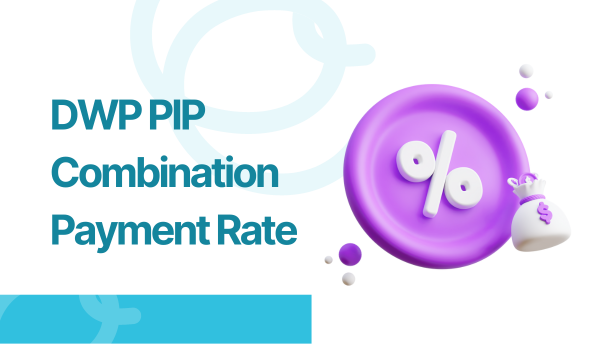Here, you will find essential information about the DWP PIP Combination Payment Rate: Daily Living and Mobility Rates News. The PIP Combination Payment aims to ensure that individuals with disabilities aged 16 to 64 have the financial resources to maintain a level of independence. It helps cover the additional costs they face due to their condition and enables them to participate in everyday activities and lives as independently as they want and as possible. Your PIP combination’s payment amount depends on the outcome of your assessment. Continue browsing this article to know about the DWP PIP Combination Payment Rate, and more.
DWP PIP Combination Payment Rate
The DWP PIP Combination Payment refers to the total financial support an individual receives under the Personal Independence Payment program in the UK. The PIP payment is designed to assist individuals with disabilities aged 16 to 64 in managing the extra costs associated with their condition.
The Department for Work and Pensions announced an increase in PIP rates in April 2024, reflecting inflation and ensuring continued support for disabled individuals.
|
Important Links |
The DWP PIP Combination Payment Rate for the year 2024 is as follows:
- Standard Daily Living + Standard Mobility:
- Weekly: £101.35
- Every Four Weeks: £405.40
- Annual: £5,270.20
- Standard Daily Living + Enhanced Mobility:
- Weekly: £148.40
- Every Four Weeks: £593.60
- Annual: £7,716.80
- Enhanced Daily Living + Standard Mobility:
- Weekly: £137.25
- Every Four Weeks: £549.00
- Annual: £7,137.00
- Enhanced Daily Living + Enhanced Mobility:
- Weekly: £184.30
- Every Four Weeks: £737.20
- Annual: £9,583.60
These are the DWP PIP Combination Payment Rate for the year 2024. The combination of these two components determines your PIP award.
Daily Living and Mobility Rates News
The PIP assessment evaluates two key areas:
- Daily Living Component: This supports individuals with the extra costs associated with managing daily activities like dressing, washing, bathing, eating, and preparing meals. The Component has two rates:
- Standard Rate: Awarded to individuals requiring help with some daily tasks.
- Enhanced Rate: Awarded to individuals needing help with most daily tasks or who are unable to perform them independently.

- Mobility Component: This assists individuals with the extra costs associated with moving around indoors and outdoors. It has two rates:
- Standard Rate: Awarded to individuals with some difficulty moving around or who need aids like a cane.
- Enhanced Rate: Awarded to individuals who are virtually unable to walk or who need continual support when moving around.
The combination of daily living and mobility rates determines your total PIP award.
Potential Changes to PIP Combination Payments
The DWP PIP Combination Payment Rate has sparked discussions about the future of PIP payments. Citing concerns about rising costs and ensuring fairness within the system, the DWP is exploring replacing cash payments with alternative support methods like vouchers, grants, or access to shopping catalogs.
The Green Paper titled “Modernising Support for Independent Living ” outlines this proposal. The Health and Disability Green Paper aims to more effectively target support to those with the most significant disability-related expenses. Therefore, the details remain limited, and the potential shift from cash payments has generated mixed reactions.
|
Important Links |
Possible Advantages DWP PIP Payment
The DWP PIP Combination Payment Rate voucher targeted support could be restricted to specific categories like essential living aids or mobility equipment. Potentially ensuring funds are used for their intended purpose.
The DWP suggests the current system might be susceptible to misuse, with some recipients not necessarily spending the money on disability-related needs. Vouchers could address this concern.
Therefore, here are some potential concerns with a voucher system:
- Reduced Choice and Flexibility: Replacing cash with vouchers could limit recipient choice and flexibility in managing their disability needs.
- Administrative Burden: Implementing and managing a voucher system might create additional administrative complexities for both the DWP and recipients.
- Stigma and Discrimination: Concerns exist around the potential stigma associated with using vouchers for disability-related purchases.
However, the DWP PIP Combination Payment Rate is currently seeking the proposed changes. The final decision regarding the future of PIP payments will likely depend on public response and parliamentary discussions. It’s important to stay informed about developments and participate in any consultations to ensure your voice is heard.
Continue Browsing SMT home to get more information.